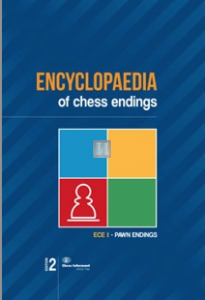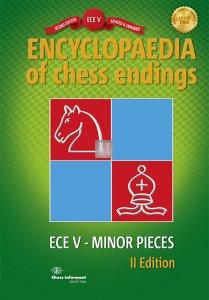Enciclopedia dei Finali di Torre - 1a parte, 2nd edition

La seconda edizione esce 30 anni dopo la prima! Si basa ancora sul lavoro dei giganti che l'hanno concepita, ma è notevolmente aggiornata e rivista. Ci sono 1930 esempi didattici all'interno (in realtà più di 2.000 se contiamo anche quelle varianti che funzionano da esempi a sè stanti). Non vi aspettate esercitazioni casuali con Chess Informant.
Descrizione
La seconda edizione esce 30 anni dopo la prima! Si basa ancora sul lavoro dei giganti che l'hanno concepita, ma è notevolmente aggiornata e rivista. Ci sono 1930 esempi didattici all'interno (in realtà più di 2.000 se contiamo anche quelle varianti che funzionano da esempi a sè stanti). Non vi aspettate esercitazioni casuali con Chess Informant.
Come tutte le pubblicazioni di Ches Informant è in linguaggio internazionale con figurine e simboli, quindi non è necessario conoscere alcuna lingua se non quella scacchistica!
Dalla prefazione in lingua inglese
SIMPLY ILLUMINATING
How many times have you heard it? It’s an old school rule: one should learn endings first and only then switch to the earlier content. How many times have you heard it? It’s an old school rule: one should learn endings first and only then switch to the earlier content. Arguable it’s true, if we follow the advice of some of the biggest chess names of all time.
The First Edition of ECE II Rook 1 was compiled by Andras Adorjan, Alexander Beliavsky, Walter Browne, Lubomir Ftacnik, Anatoly Karpov, Garry Kasparov, Lubomir Kavalek, Vlado Kovacevic, John Nunn and Jan Timman.
The Second Edition comes to the surface 30 years later! It is still based on the work of these giants, but heavily updated and revised. There are 1,930 educational examples inside (actually more than 2,000 if we count separate endings in variations). You do not expect randomness with Chess Informant.
ECE II covers R3, R4, R5, R6 and R7 according to the classification of chess endings (see below). No doubt, this is a most valuable tool for learning endgames, which will be greatly appreciated by advancing players or trainers. Yet, if you are looking for verbal explanation, it is the wrong place to go.
Nobody will tell you about the sixth rank rule, the bridge, a- and c-pawns vs. rook, or simple things like the rook should be placed behind the pawn aiming to promote and that you should cut the opponent’s king off. But you will recognize not only this but much more by yourself.
After Page 511 the moment of awakening will come on a clear, sunny day: Your technique will be precise and these complicated maneuverings will already be in your DNA because you used first-rate resources with which to do your own methodical work.
This book won’t let you down and leave you fading into chess obscurity. Remember, the desert (all these openings, middlegames, combinations) comes later. Statistically, rook endgames will emerge in 80% of all endings. In the chess world they say that all rook endgames are drawn; but it is also true that we all want to win. So, let’s do it!
Josip Asik, CEO of Chess Informant
Informazioni
- Marca Chess Informant
- Codice 6625
- Anno 2014
- Pagine p. 512 - hard cover
- Isbn 9788672970692
 Italiano
Italiano
 English
English




